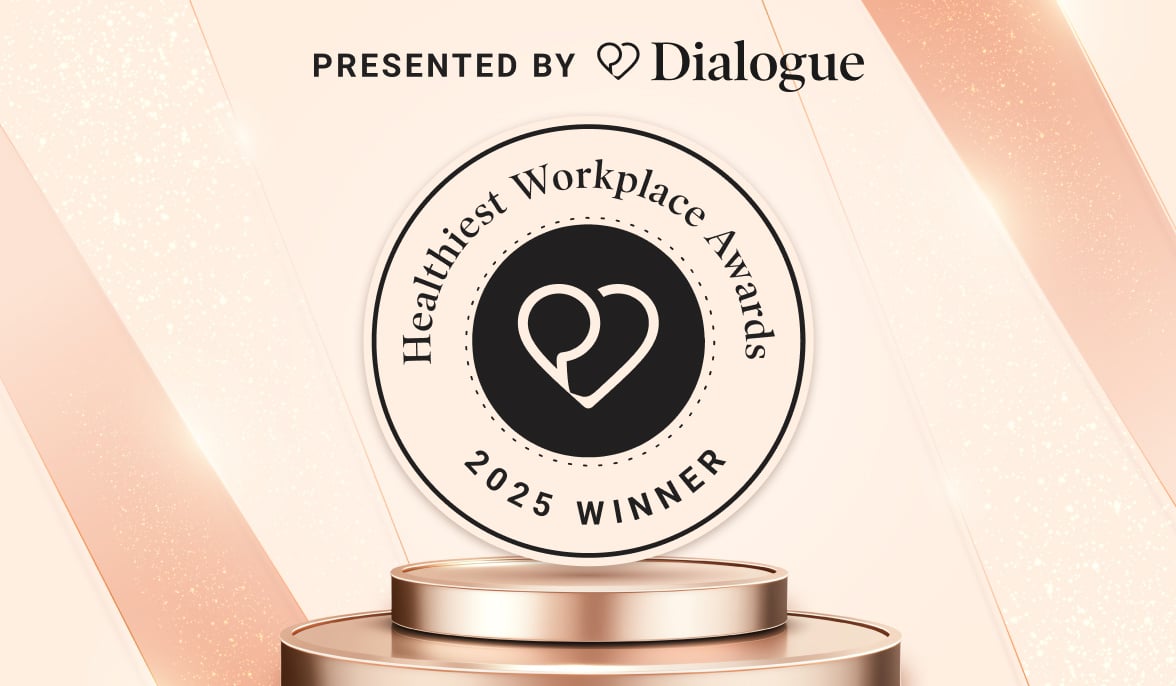Canada’s healthcare system is under unprecedented strain. Only 26% of Canadians can get a same- or next-day appointment with a primary care provider, and more than 20% don’t have access to one at all. Clinicians are burning out, with 60% of physicians saying the administrative burden is affecting their mental health.
At Dialogue, we see these pressures every day—and we also see opportunities to address them, not through silver bullets or science fiction, but through smart, practical innovation. We aim to use technology to give time back to both members and practitioners, so every interaction feels human, attentive, and safe.
Artificial Intelligence (AI) is often hyped as the future of healthcare. But we believe its most immediate and meaningful role lies not in replacing human care, but in supporting it. By improving access and freeing up time, practitioners can spend more time interacting with patients, resulting in decreased clinician burnout, improved patient experience, and more efficient care delivery. When members feel truly heard and cared for, they carry that sense of trust and well-being back into their daily lives and workplaces, strengthening both individual resilience and organizational culture.
Let’s explore a few places where AI is already quietly reshaping the healthcare experience, and what it means for the future of virtual care in Canada.
1. The admin strain: How AI is helping behind the scenes
One of the biggest contributors to provider burnout isn’t patient care. It’s paperwork. From charting and note-taking to sifting through patient history, administrative tasks consume hours that could be spent connecting with patients.
This is where AI is already proving its value. With patient consent, tools like AI-powered scribes can listen to a virtual or in-person consultation and draft notes that follow best practices and clinical standards. The provider then reviews, edits, and signs off on the note before the information is added to the medical record, ensuring clinical oversight and accuracy.
AI-supported tools during intake can summarize symptom descriptions and medical histories to present a clear, concise briefing before the appointment begins. Most importantly, all clinical notes must remain under the care provider’s control, and all data must stay in Canada to meet privacy and data security regulations.
Across Canada, several provincial health systems and private clinics are piloting AI-assisted tools to streamline documentation, reduce provider workload, and elevate the patient experience. Provincial pilots and clinician champions are rapidly turning AI scribes into safe, secure tools that streamline documentation and elevate the care experience. These are early but promising steps toward a more sustainable system—one where clinicians can focus more on people, and less on paperwork.

2. A more empathetic intake: Using AI to hear the patient’s story
Taking a patient’s medical history is essential to accurately diagnosing and treating them. However, many virtual care platforms (and more than a few paper intake forms in brick-and-mortar clinics!) still rely on linear intake flows with predetermined questionnaires. These forms can be intimidating, limiting, or even confusing, leading to errors, frustration, and delays in care.
AI offers a new approach: using natural language processing (NLP) chatbots to allow patients to describe their symptoms in their own words. While chatbots are already common in industries like entertainment and customer service, Dialogue has been at the forefront of developing safe, accurate, and member-friendly intake chatbots specifically for virtual healthcare. Instead of checking boxes or choosing from lists, people can simply talk. The AI can then interpret and translate their stories into structured clinical data, enabling efficient, accurate documentation and leading to a more seamless care experience.
At Dialogue, we’re actively exploring this space, designing AI-driven tools that enhance intake without compromising on clinical safety or quality. It’s about meeting members where they are, with experiences that feel more personal and human.

3. Breaking language barriers: Real-time translation and transcription
Language should never be a barrier to receiving high-quality care. Yet for many newcomers, non-native speakers, or people with hearing impairments, it still is.
Here, AI shines again. Live transcription tools can help patients follow conversations more easily. Layering on real-time translation can bridge language gaps, allowing care providers to communicate clearly and compassionately, even across linguistic divides.
Imagine a multilingual virtual care experience where everyone feels seen, heard, and understood. At Dialogue, that's the inclusive future we're actively building toward.

4. Dialogue’s perspective: Where AI belongs — and where it doesn’t
We believe AI has a vital role to play in virtual healthcare, but we’re equally clear-eyed about its limits.
AI is a powerful assistant, not a clinician. It should never replace medical judgment or undermine the human connection that’s at the heart of great care. At Dialogue, our principles for responsible AI are simple:

We invest in AI with purpose, clinical oversight, and strict guardrails, because in healthcare, trust isn’t optional. It’s everything.
Augmenting, not replacing, human care
AI in healthcare isn’t about automation for its own sake. It’s about making room for what matters most: human connection, quality care, and equitable access.
Canada’s healthcare system is evolving. At Dialogue, we believe it’s time to lean into tools that help us do better. Thoughtfully, ethically, and always with members at the centre.
AI won’t solve every challenge overnight. But when used wisely, it can help us deliver care that’s not just faster or more efficient, but more human. By putting people first and empowering practitioners with the right tools, we can create a healthcare experience that uplifts members and strengthens the organizations that support them.
To stay ahead of trends in health and well-being, subscribe to our monthly newsletter. We share the latest insights, news, and perspectives to help you make informed decisions for your organization.




 Canada (EN)
Canada (EN)
 Global (EN)
Global (EN)








